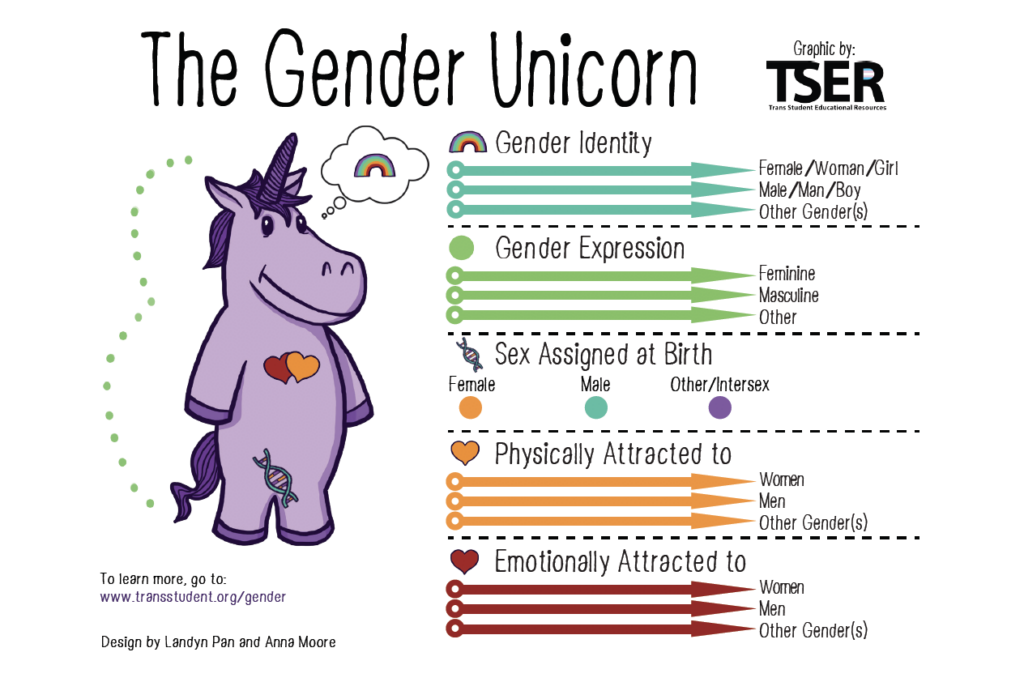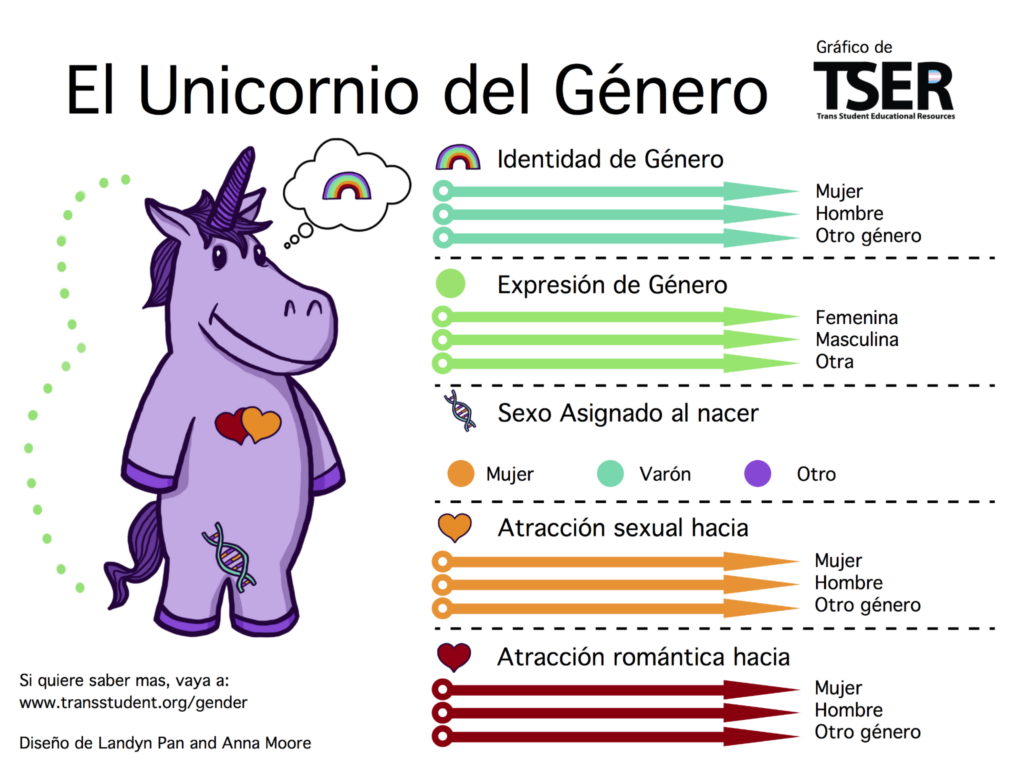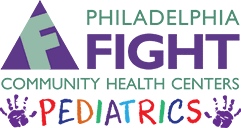As LGBTQ equality advances across the nation, there are still significant gaps in the rights of LGBT individuals and their families. LGBTQ families are diverse and often require additional resources and support. We hope that the resources listed below will be helpful for you and your family.
What does LGBTQ stand for?
LGBTQ stands for Lesbian, Gay, Bisexual, Transgender, Queer/Questioning.
Having a child come out as lesbian, gay, bisexual, or transgender can be stressful or scary for parents and family members. In spite of recent advances in LGBTQ rights in the US, LGBTQ people and families still face a lot of discrimination. Parents may also be afraid because they have heard that LGBTQ youth have more psychological and mood problems than cisgender heterosexual teenagers. We want you to know that the most important thing you can do to keep your LGBTQ child safe is to listen to them and to let them know that you love them and support them. Our team at FIGHT Pediatrics will be here to support both your child and you.
Many parents and family members who are new to talking about LGBTQ topics may not be sure what words to use or may be afraid of saying the wrong thing. If you are confused or curious about specific terms, the Human Rights Campaign has a helpful glossary that provides definitions of many of the most common terms used by LGBTQ people. We have included some other introductory information below, along with links to more in-depth resources.
What is the difference between sex and gender?
Many parents are familiar with lesbian, gay, and bisexual people and have a good understanding of sexual orientation. But many people are less familiar with transgender and gender diverse people. Transgender people are people whose gender identity does not match the sex that they were assigned at birth.
When your child is born, someone tells you “it’s a girl” or “it’s a boy.” Then female or male is written on the birth certificate. That is your child’s assigned sex. Most people think of sex as simply male or female based on a baby’s genitals, but sex is actually a collection of features including genitals, internal sex organs, and chromosomes. Some people are born with a mixture of “male” and “female” characteristics. These people are called intersex.
Gender identity is what a person feels that they are deep inside. A person’s gender may be boy/man, girl/woman, both, or neither. People use many terms to describe their gender identity. A person’s gender identity may or may not match their sex assigned at birth. If a person’s gender identity and sex do not match like we expect, they may identify as transgender. People who do not identify either as a boy or as a girl may also use the term nonbinary. Being transgender does not mean there is anything wrong with someone. It is not a disease or a mental illness. Transgender people may experience distress and discomfort because of a difference between their gender identity and how others see their gender. This is called gender dysphoria. It is important to remember that you cannot tell someone’s gender just by looking at them. For a more detailed and comprehensive explanation of sex and gender identity, please see the resources at the end of this section.
One commonly used illustration of the differences between gender identity, gender expression, assigned sex, and sexual orientation is the Gender Unicorn from TSER.


This graphic from GLSEN provides a visual depiction of the relationship between different aspects of gender.

What is the difference between sexual orientation and gender identity?
In the simplest terms: gender is who you are and sexual orientation is who you are attracted to. Lesbian, gay, and bisexual are terms that refer to sexual orientation. Knowing a person’s sexual orientation may or may not tell you anything about their gender identity. You should not assume anything about a person’s gender or sexual orientation based on other things you know about them.
I think my child might be gay/lesbian/bisexual…
The most important thing you can do for your child, regardless of their sexual orientation, is to let them know that they are loved and supported. Do not assume anything or ask them about their sexual orientation. Instead, let them take their time to tell you. You can help them feel more comfortable and safer speaking to you by demonstrating your support for the LGBTQ community. Instead of asking your child about themself, you can show your support for LGBTQ people by doing things like making positive comments when LGBTQ celebrities or characters are brought up. You can also try suggesting age-appropriate TV shows or movies with LGBTQ characters to watch as a family. These actions may help your child feel more comfortable talking to you when they are ready.
I think my child might be transgender/gender expansive…
Many parents feel concerned or overwhelmed when they think their child might be transgender. It is important to remember that the best thing you can do for your child is to let them know that you love them unconditionally. This applies whether they are cisgender or transgender. It is also important to remember that cisgender kids may explore their gender or go outside of traditional gender roles too. For example, there are many girls who act like “tomboys” but grow up to be cisgender women. Don’t assume anything about your child’s gender identity until they tell you something.
If your child has not said anything to you but you are worrying about how to support them, this is a great opportunity to learn more about transgender people. Gender spectrum and the Trevor Project guides are a great place to start.
My child just told me that they are gay/lesbian/bisexual…
The most important thing that you can do as a parent at this moment is to make sure that your child knows that you love and support them. Coming out to you may be one of the scariest moments in your child’s life so far. It is important to make sure your child feels loved, even if you are confused or worried about what they have shared with you. If you are worried or upset about this news, do not share this with your child. Find another adult to talk to, such as your spouse/partner, another family member, or a mental health professional.
It is okay if you are not very familiar or comfortable with LGBTQ people or with parenting an LGBTQ child yet. This is your time to learn more.
- PFLAG: Our Children
- Local PFLAG chapters in Collingswood and Bucks County
- My Kid is Gay
My child just told me that they are transgender/nonbinary/gender expansive…
The most important thing that you can do as a parent at this moment is to make sure that your child knows that you love and support them. Coming out to you may be one of the scariest moments in your child’s life so far. It is important to make sure your child feels loved, even if you are confused or worried about what they have shared with you. If you are confused or upset about this news, do not share this with your child. Find another adult to talk to, such as your spouse/partner, another family member, or a mental health professional.
If you don’t know much about transgender people, now is the perfect time to learn more. A good place to start is with our educational materials and the resources linked above.
My child has told me they are transgender and I worry about them making permanent changes to their body…
In the past few years, there have been a lot of scary news stories and talk on social media about medical treatment for transgender youth. Some states have even banned gender-affirming care (healthcare for transgender people) for minors. This can give the impression that medical care for transgender youth is extreme and dangerous or controversial. This is not true. The providers who have spent years caring for transgender youth know that gender-affirming care is as safe as any other area of medical care and that it saves lives just like other medicine. Research shows that both personal support and gender-affirming healthcare significantly improve mental health for transgender youth, including dramatically reducing their risk of suicide.
There is a lot of misinformation being shared about gender-affirming healthcare. One common misconception is that young children are being given irreversible surgeries or dangerous medications. This is not true. In fact, there are no medical treatments for transgender children before they start puberty.
If you are interested in hearing an introduction to medical care for transgender children and teens that is aimed at parents, we recommend the episode Transgender Talk from the Your Parenting Partner Podcast with Brandi Davis, in which she interviews expert Dane Menken, CRNP. The episode is also available on Apple Podcasts and Spotify.
An Introduction to Medical Transition
For those who want more details, here is a very brief outline of medical therapies that transgender people may pursue as part of their transition. This guide is not intended to give you any advice about what is medically appropriate for your child. Please talk to your child’s doctor for more information and advice specific to your child.
Puberty Blockers: The first step a transgender person can take in gender-affirming medical treatment is taking medications that stop the progression of puberty. These medications can be started when children start entering the early stages of puberty. This usually occurs around ages 9-11, but can be a few years earlier or later. In fact, the same medications used to delay puberty for transgender children have been used for many years to safely delay puberty for cisgender children when their puberty starts unusually early. The effects of puberty blockers are completely reversible. When your child stops taking these medications, their body will resume puberty where it left off, unless they start taking gender-affirming hormone therapy (often called hormone replacement therapy or HRT).
Gender-Affirming Hormone Therapy: Gender-affirming hormone therapy uses hormones usually associated with the “opposite” gender to help transgender people feel that their body is a better match with their gender identity. Testosterone is given to people who were assigned female at birth. Estrogen is given to people who were assigned male at birth. Hormone therapy is partially-reversible. This means that some of the effects of hormone therapy are permanent and some go away if the hormone treatment is stopped. The most common age to start gender-affirming hormone therapy for transgender youth is around age 16. Some clinics are starting to offer hormone therapy at younger ages to help transgender youth go through puberty at a more similar age to their peers.
Gender-Affirming Surgeries: Many transgender people are interested in having one or more surgeries to help their body look and feel more like it matches who they are. Gender-affirming surgeries can generally be split into three categories: chest surgeries, genital surgeries, and surgeries to modify the appearance of other parts of the body. Chest surgeries include removal or augmentation of breasts. Genital surgeries create a penis from a vagina or a vagina from a penis. Most gender-affirming surgeries are not performed on people under the age of 18 years old. Some chest surgeries are performed under the age of 18 if the teen and their doctor agree that they are ready. It is very, very rare for a transgender patient to have genital surgery before 18 years old.
Many people find the idea of surgery to be the most scary out of the medical treatments they have heard about for transgender people. It is important to know that every patient who has gender-affirming surgery is thoroughly evaluated by their doctor and medical team to make sure that they are ready and that surgery is the right step for them.
The best thing that you can do for your transgender/nonbinary/gender expansive child is to find a clinic with experience in caring for transgender youth to help guide you and your child on this journey.
Recursos en Español
Lambda Legal – tiene recursos en español para adolescentes y jóvenes LGBTQ. Estos recursos incluyen recursos para la familia y los amigos y conceptos básicos sobre ser LGBTQ.Galalei – una organización en Philadelphia que sirve la comunidad de personas Latinx y LGBTQ. Galalei tiene programas específicos para los estudiantes LGBTQ y para personas transgénero.


